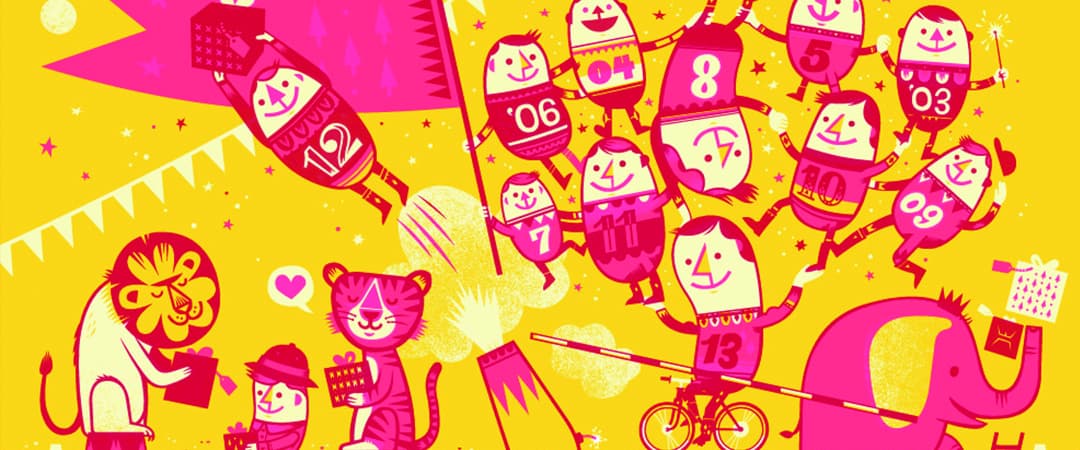
The work of The Little Friends of Printmaking (printmaking and illustration duo JW & Melissa Buchanan) culls every color, shape, and nuance of joy and happiness and arranges them perfectly on a sheet of paper. The name gives 100% of their truth away — they are printmakers and each piece carry the want of friendship. From the posters themselves to the how the posters are presented to the audience — each color, font, and element is designed as a sign of welcome. A sharing of joy and laughter. Their brand of illustration is based in the immediacy of a smile, a dedication to the silly and absurd, light-hearted and high-spirited.
As both the illustrators and printers of their work, the Buchanan’s understand paper and ink, the squeegee and screen, and how they all play together. Whether the screenprint has seven colors or just two, each one is there at the service of the overall final piece. They are able to reach the maximum potential of each element of a poster, no matter the number of colors, material, or design.

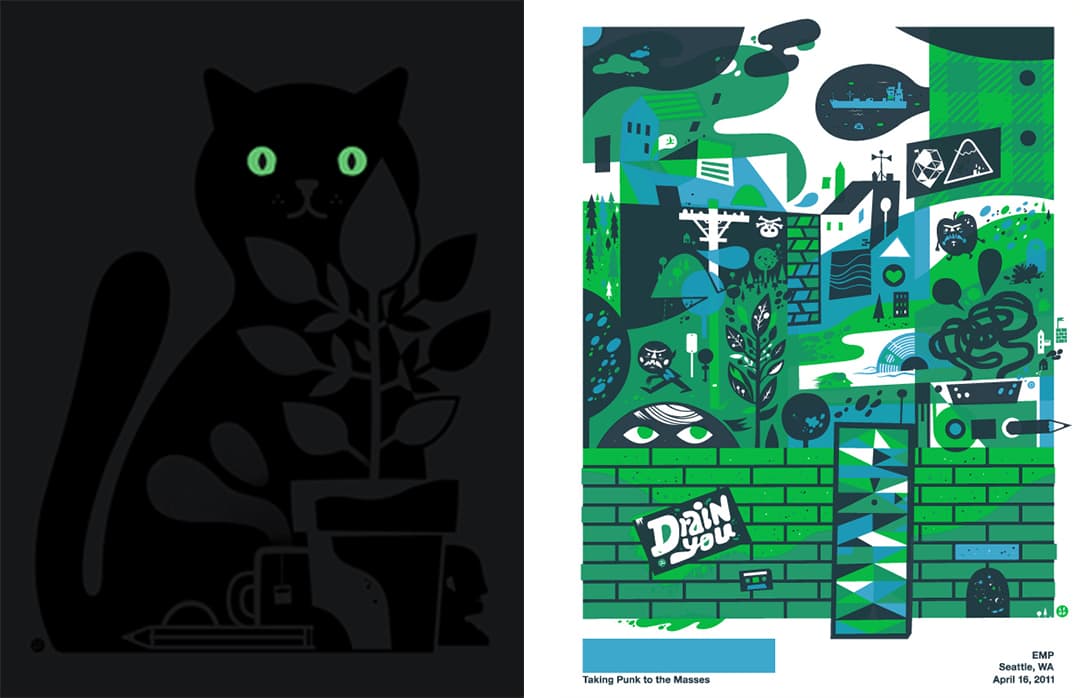
‘Midnight Cat’ (L) ‘Bringing Punk to the Masses’ (R) by The Little Friends of Printmaking
CJ: There’s a good amount of poster work and illustration that grabs the eye by the obvious difficulty in the work – intricate line work and a huge palette are always impressive, but your ‘Midnight Cat’ poster is far more remarkable. It’s stunning in its simple and clear use of basic elements. The shape of the cat, the black on black. Green eyes. Posters like ‘Taking Punk to the Masses’ shows off your incredible ability to blend disparate elements into a cohesive composition. That poster has so many contrasting shapes it shouldn’t work, but it totally does. Quite a few years separate ‘Midnight Cat’ from ‘Taking Punk to the Masses’ – do you see your work simplifying? Is it just a matter of making the right decisions for the project at hand, or have your tastes evolved over the years?
JW: From the beginning, our natural inclination has always been to go just completely overboard. Fifty ideas all mushed together into a ball, and hopefully, it all hangs together. I don’t know that we’re self-consciously fighting against that urge now (because we still frequently work in that mode), but we are allowing ourselves to do these simpler things that are sort of an expression and an illustration of the printing process.
Something like ‘Midnight Cat’ just would not be possible if we weren’t still hand-printing our own work. I know that other people in our field see that practice as an enormous waste of our time (and don’t mind telling us so), but printing the work ourselves is what keeps us plugged into the materiality of the medium. We’ve always said that the biggest influence on our aesthetic is the silkscreen process itself, with all of its peculiarities and anachronisms, but the thing that probably gets left out or glossed over is that you actually have to be the one doing the printing – squeegee in hand, covered with flop sweat and ink and despair – in order for you to actually understand what’s possible. The idea for ‘Midnight Cat’ came from a print-off that looked particularly good. A simple black image, printed on black paper, which just stuck in our minds. And if you’re not there to see that moment, then you don’t get to have that idea. The accidents and mistakes and random print-offs that are an ordinary part of printing are so valuable to us. They’re both a learning opportunity and an idea generator. There’s also something so defiantly stupid and uncommercial about ‘Midnight Cat,’ which absolutely delights us. If your monitor isn’t calibrated just right, it’s just a black rectangle with green dots. It has zero commercial appeal until you’re in the same room with it. Then it’s so perfect and so perfectly obvious – it’s dumb.
Melissa: When I look at our ‘Taking Punk to the Masses’ poster, I see two artists who are really eager to please, who feel like they have to fill the space with a million ideas because they want to make sure that you’re getting your money’s worth (whether you’re the person who hired them to make it, the person who’s buying it, or the person who’s just looking at it). The other thing that jumps out at me is how far we’re able to move from that style. It’s probably an oversimplification to call our current work simple because it can be difficult to make something simple that feels compelling or original. The simpler the design gets, the more complicated the act of printing can become. Big flat shapes of color with no modulation require a steady hand. With a lot of our more minimal prints the artifice is in the way the layers come together, and if the elements are off-register the illusion of the print is ruined.
My tastes haven’t changed; I like our old work. There’s still a part of me that worries when we make a more minimal print that we’re not giving people their money’s worth (no matter how novel it is). But that’s just my nightmare – I have to get over it.

Illustration by The Little Friends of Printmaking
I know this is something you get asked about constantly, and understandably so – a husband and wife working together in a classically solo creative endeavor is not a situation most people have experienced. Are you sitting down and working on a design from the first stages together? Sketching and concepting as a duo? There’s a great illustration of yours of a man dribbling a ball, fingers up in a peace sign, and two pilots in his brain – this feels like an accurate self-portrait of the two of you.
JW: This is where we have to admit to the freakishness of our little dynamic. Our working relationship is so unusual. It’s surely not replicable. We’re like two feral children who emerged from a bog, speaking a made-up twin language. We started working together nearly twenty years ago, back when I was just 18 – which may give you some idea of how truly formative those early experiences were. What was an 18-year-old version of me bringing to the party? (A: NOT MUCH.) A warm body and some shitty crosshatching? We really started together from basically zero.
Melissa: Everything that Little Friends has become is a result of us figuring things out together. We now both work in a house style that was developed together over years and years. I don’t even know what my drawing style or my artistic perspective would be, separate from Little Friends. I would basically have to go back to the womb.
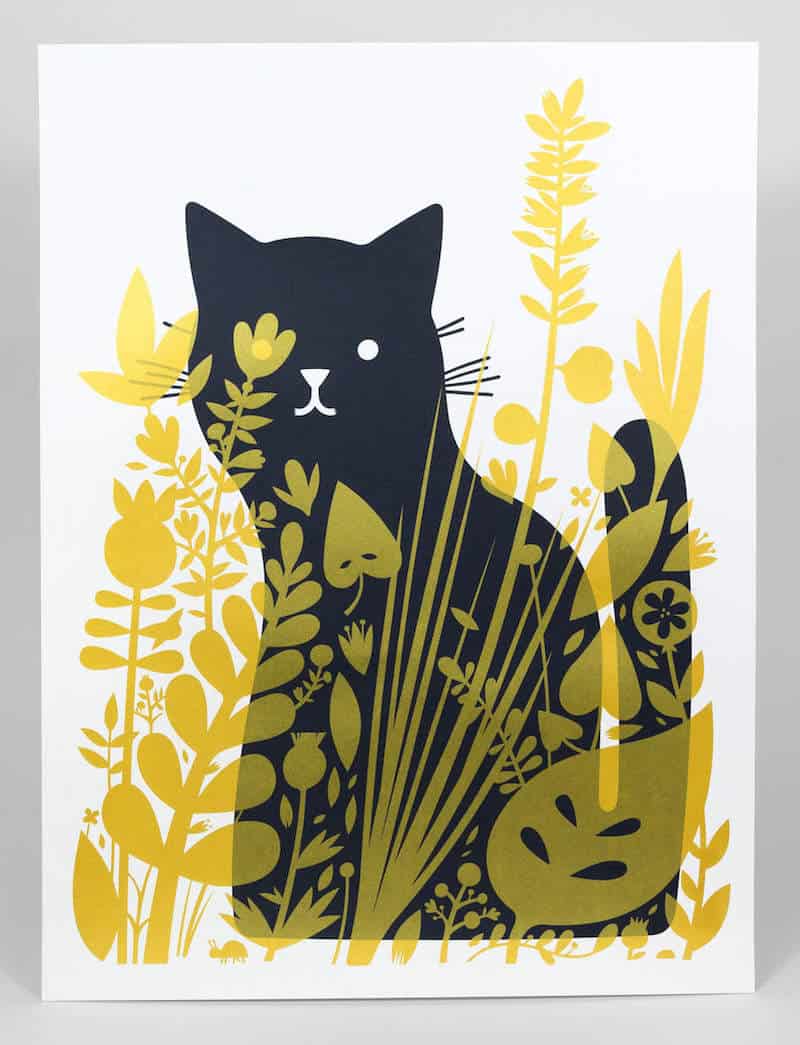
‘Cat Behind Plants’ by The Little Friends of Printmaking
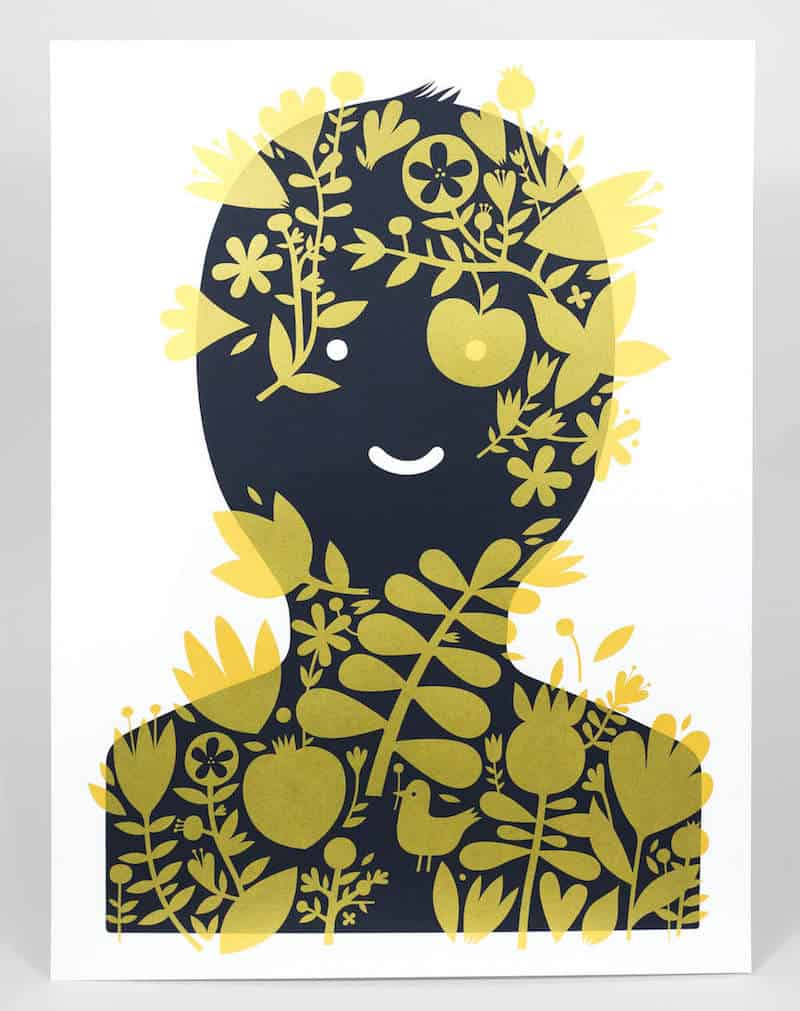
‘Man Behind Plants’ by The Little Friends of Printmaking
‘Man Behind Plants’ shows off the wonderful humor and joy that exists in each of your illustrations. It’s silly, but not so much that it can easily be tossed off as a joke. It feels like a children’s book illustration aimed at adults. Is it important to keep the work light and fun?
JW: We’re just trying to stay sane. You make so much work, and if it was any more serious than it is I think I would just crumple under the weight of it all. This past summer, we visited the studio of David & Dorothy Weidman and went through all of their prints with their daughter. If the Wiedmans ever worried about whether the prints they were making were Important or Meant Something, it’s not apparent in their work, which is about as joyful as printmaking gets. It was such a great experience, and it left me with this incredible sense of relief – Like, maybe we’re okay. Maybe you can just go your whole life only making the work that delights you, or makes you laugh. Maybe you don’t have to worry about disappointing people or being derelict in your duty as an artist to be dry and deathly serious. Who knows?
Melissa: Filling up a blank page with anything is a prodigious act of ego, and if you’re a person riddled with doubt it can be an incredibly painful process filled with self-flagellation. That’s what makes having a partner so helpful – when I’m sketching out new ideas, I’m often just trying to make James laugh. The ideas that delight both of us have a sense of momentum; they essentially demand to be made into a product.

‘Revenge’ by The Little Friends of Printmaking
You stay busy with pop-ups and conventions like DesignerCon and ComicCon as well as being guest artists at Disney’s WonderGround Gallery. How vital are these live events?
JW: Well, first, you can learn so much watching people interact with and respond to your work when you’re vending at a big in-person event like that. What’s working, what isn’t – that sort of thing. And secondly, you’re reaching this huge pool of people who have probably never seen your work before, which is really valuable. I feel like that’s the only way to grow your audience. Especially for us, since the appeal of screenprints is understood best by seeing them up close, in person. So you have to go where the people are, like Ariel. And even though it can be occasionally uncomfortable or awkward, and you may have to explain yourself and/or justify your existence to people who are weirdly skeptical about screenprints with cats on them – so what?! Do it anyway.
Melissa: When you’re in a booth at SDCC, you’re standing in a 10′ x 10′ cube filled with the best of your work. It’s such an amazing advertisement to potential clients. Like, “Hey [Client Name Here], I made all of this! Would you like me to make some for you?” As much as it’s a tool for courting clients, the sales at these in-person events give us the freedom to not need to take on too much illustration work. This allows us to take chances and make non-commercial work (not that any of our work is strictly non-commercial).
JW: Going to Japan, doing those pop-ups at Isetan – that was really intimidating, because people really really really had never heard of us there. I cannot stress enough how unknown we were in Japan. So, when people responded positively, it was such a win for us!
Melissa: Coming home after our first pop-up in Tokyo, we had the realization that we barely scratched the surface. We had a hugely positive response, but with a small subsection of people. The second time we came back from Tokyo, our realization was that we have to go back every year if we want to reach the core people who would be interested in our work.
When we were first invited to show in Tokyo, we were completely freaked out because we didn’t know what we’d be able to bring. Going overseas is difficult for us because – unlike events we do domestically – logistics prevent us from bringing our large prints, which are our bread and butter. The challenges of transporting our work overseas forced us to develop other products, smaller objects that would travel well – bandanas, keychains, silk scarves, pins, patches. This is stuff that I love that we probably wouldn’t have made if we didn’t need to lug it through the airport and the streets of Tokyo.

‘Magic Rings’ by The Little Friends of Printmaking
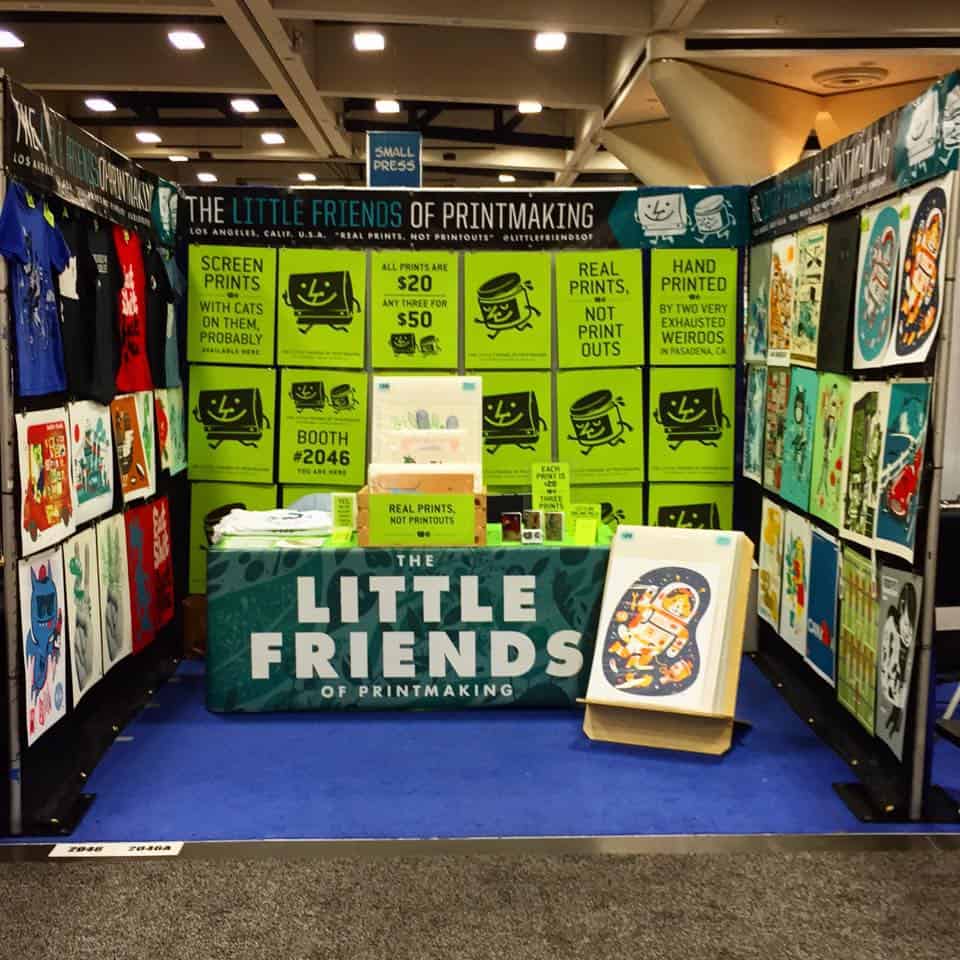
The Little Friends of Printmaking booth at San Diego ComicCon 2015
At Comic-Con you shared a booth with designer Tuesday Bassen, an artist whose work is in line with your own. There’s always a great feeling of community when talking to illustrators. Was it an easy decision to team up and share a booth? Is there a sense of ‘she’s the competition’ or is that too negative?
JW: That sense of competition between artists is real. And it’s a real drag, too. I haven’t had the easiest time having lasting, close friendships with other artists, but obviously things are different with us and Tuesday. I don’t know if it’s a question of shared temperament – she doesn’t take herself seriously; she’s driven; she wants to try everything. She’s a bossy Midwesterner! I feel that. She’s always trying to make things happen to create new opportunities for herself and others, and we are down for it, every time.
Melissa: We had both exhibited at SDCC separately, but decided to share a booth for the sake of fun and convenience. We assumed that we would each make a little less money than in previous years based on the fact that we’d both have less space than we were used to, but it didn’t work out that way at all. We both had more fun and more money, so WIN WIN. Likeminded artists working together helps create a context for each other’s work, helping the viewer understand what the hell they’re looking at. “Who knew,” said the lady who’s only been working collaboratively for nearly twenty years.

‘Girl Gang’ by Tuesday Bassen

‘Lovers’ by The Little Friends of Printmaking
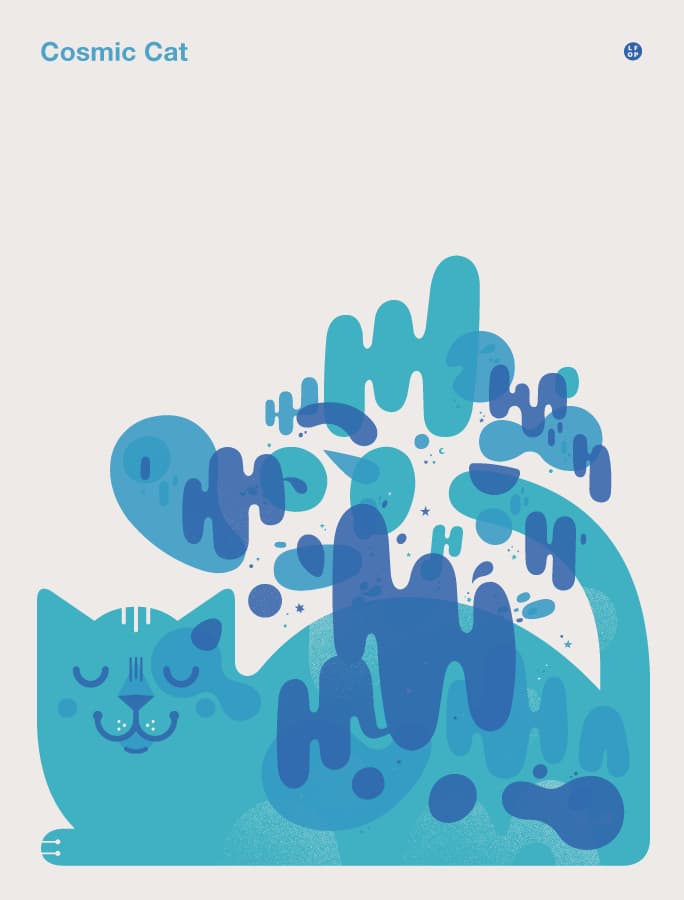
‘Cosmic Cat’ by The Little Friends of Printmaking
In 2013 you moved from Milwaukee to Los Angeles, a major shift in environment. Has living in LA affected your work at all? Stylistically or in manner workflow? Has California living changed your Midwestern mentality?
JW: When we moved out west, we didn’t anticipate that it would change our art practice so much. We’d been living that illustrator’s lifestyle in the Midwest – like two hermits in our dank little cave, nose eternally to the grindstone, few friends, nothing to do except work (and to try to spin our weird lonely existence into some kind of virtue; we’re the salt of the earth, dammit). We moved to be closer to friends, for a change of scenery, but we got something else. Moving shook us out of our routine.
One of my favorite parts of living here is being part of a huge community of artists. When you’re an artist in a small city like Milwaukee where there aren’t that many opportunities to go around, people tend to hoard them, to be less generous with each other, to treat being an artist like a zero-sum game. If you’re succeeding, then I’m not succeeding. And this probably sounds nuts, but when we were getting ready to leave, multiple people reached out to us to tell us what a big mistake we were making, and that “now we’d just be a small fish in a big pond.” Which, whatever, man. Gee, thanks! So, as a teeny-tiny fish (krill! plankton! an amoeba!) in a big pond filled with artists of all kinds, I can tell you that my experience being an artist in a big city has been precisely the opposite of what I was used to.
Melissa: I love living in Los Angeles because I don’t have to feel like a freak if I’m walking around the Trader Joe’s in my pajamas at 2:30PM on a Tuesday because this city is filled with people who work alternative schedules. It’s honestly weirder here to have to go to a 9-to-5. The rest of us are going to a 10AM showing of ‘Black Panther’ and wondering why you can’t join.
JW: The light is so different here in LA – it does change how you work as a printmaker. We’ve used more metallics, more fluorescents, probably more white paper than we’ve ever used in our life – just because the light behaves so differently. Prints just light up in the sun. We did a whole series of large prints on gold foil just to play with the light.
Melissa: The gold foil prints were a way of paying tribute to Los Angeles and the light during sunset here. I was at a paper supplier and saw the gold foil samples, which just screamed LA to me. I immediately wanted to make something with it. Foil prints are popular these days, but often it’s just a variant – meaning, the print wasn’t designed to be on foil. It seemed like a missed opportunity. Once I settled on making a set of prints on gold foil, I knew that I wanted to show as much of the foil as possible – it’s honestly the best part, and it’s so expensive that hiding it seems nuts. It’s work that could only exist on gold mirrored foil, work that could only have been inspired by living in Los Angeles, and work that might not have sold but for the indulgent art-loving weirdos who live here.

‘Treehouse’ (L) and ‘Three Bears’ (R) by The Little Friends of Printmaking
Your ‘Treehouse’ poster for Adventure Time was a successful seller, so much that you went ahead and made another treehouse poster, this time for the story of ‘The Three Bears.’ With attending so many events, I would guess you have a lot of contact with customers and window shoppers – are you taking into account what people respond to?
JW: It was such a weird experience for us to have that ‘Treehouse’ print sell out so quickly, because then it was just over and done with. The way that we usually work, we’re used to living with these prints for a lot longer – tinkering with the design, changing the colors, letting them sell out, and then bringing them back when you have an idea of how to improve them again. And sure, we got a lot of comments and requests for ‘Treehouse’ through email and at events, not that we could do anything about it. But it was clearly a concept that we weren’t done playing with. Why not do it again? And so the making of the “Three Bears” print became sort of a curious exercise in self-plagarization.
Melissa: The success of that print was kind of a lesson for us that if you do something well once, you don’t just let it stand as a singular accomplishment – you have to revisit it. There’s always more to do, more to say. It doesn’t stop people from asking for ‘Treehouse,’ though.
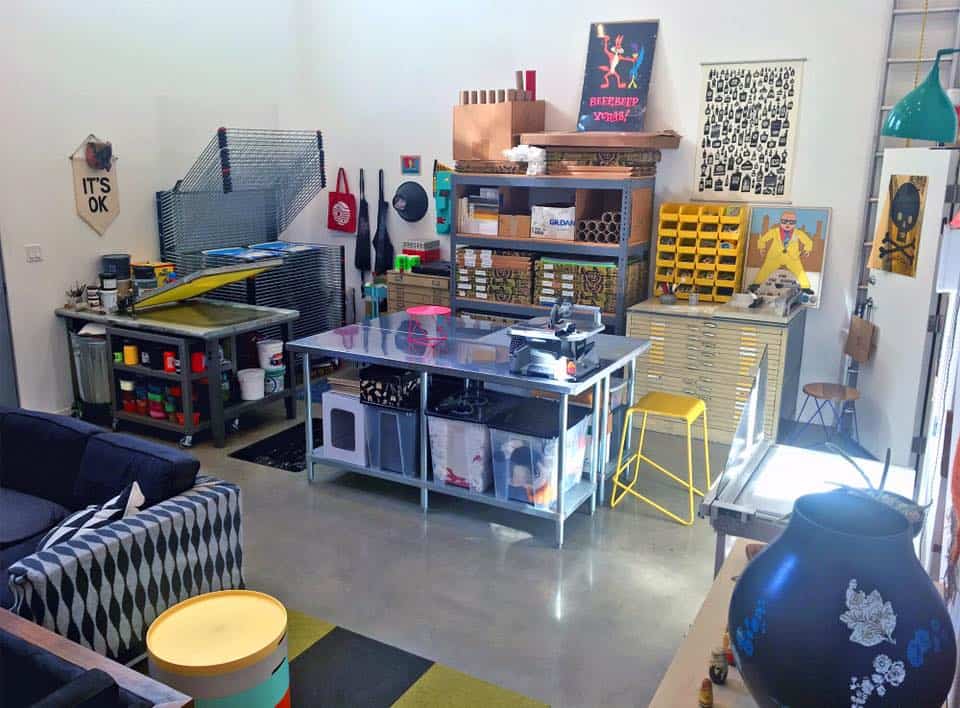
The Little Friends of Printmaking studio
Does printing your own work play into how you create an image? Meaning, do you leave the color choices and paper stock open to spontaneity, something that can be changed once the screens are ready to go?
JW: Absolutely! The ability to react to how things are looking on the press and make changes instantly is such a luxury – I don’t think we could ever give it up!
Melissa: Occasionally something we design is printed by one of the large screenprinting houses (because the client needs too many and my arms would fall off). I’m so used to printing everything myself and being able to make changes on the fly; it’s always interesting to see your work interpreted by another printer who maybe didn’t feel empowered to adjust things as needed. I’m never disappointed, in part because it’s done and someone else did it and I didn’t have to and therefore I’m very satisfied. A++ would recommend.

Devo gig poster by The Litle Friends Of Printmaking
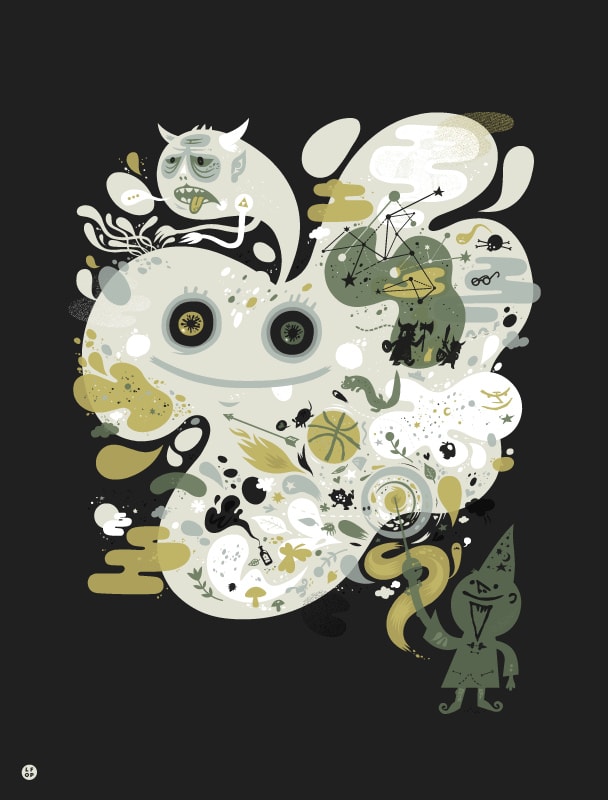
‘Advanced Wizardry’ by The Little Friends of Printmaking
The Little Friends of Printmaking has the feel of a major thing – a brick and mortar store would be a good fit. You already have t-shirts, enamel pins, and patches. Some are designs unique to the item and some are from existing posters. Has it been a fun challenge designing for different formats? Do you see branching out from events to a full shop?
JW: First of all, thanks. Designing different kinds of products has been a lot of fun for us. We try to bring the same level of rigor and thought that we put into prints to these other kinds of designer doo-dads. In the print studio, we’re always preoccupied with making something that – like ‘Midnight Cat’ – is an expression of the medium and the materials. We want a print to feel like an object, not just an image. And that kind of approach has translated really well into these other kinds of objects, which have the benefit of being actual objects, made of materials. (Which is convenient!) So when we make a shirt, we don’t want to just use it as a container for our artwork, we want it to feel EXTREMELY SHIRT. If we make a pin, we want to use that opportunity to do something that couldn’t be expressed in a print; something that only works as a shape cut out of shiny metal. And we don’t always succeed! But it’s a process.
Melissa: I’d love to design a brick-and-mortar Little Friends store, but I wouldn’t want to run one. The idea of being beholden to people, of being open every weekend, of bad Yelp reviews (or maybe worse, meh Yelp reviews) – it just twists my stomach into knots. I love designing signage and displays, but I’d prefer to keep it to gallery shows and pop-ups – they exist in a specific time and place, and then they’re over and I get to lay in the bed with the covers pulled up to my face.

Flight of the Conchords gig poster by The Little Friends of Printmaking
Would getting your designs in a store like Target be an attractive opportunity? Would having your items always available instead of limited edition change the business?
JW: I don’t know why not! It’s hard for me to imagine a person who would be disillusioned and disappointed with us if our work showed up in a Target, in 2018 – angry, confused tears rolling down their face, running out of the Target, sobbing in the parking lot between bites of their snack bar hot dog. Okay, so I imagined it.
Melissa: Crying into a Target garbage can, as one does. I get it.
JW: Sorry, imaginary person, but I still think it would be really cool.
Making items always available wouldn’t change our business – it basically is our business! We operate on the principle of plenty, rather than scarcity. It allows us to charge less for our work, and it puts us in a position where we can sell our work to the biggest possible cross-section of people. To be fair, a lot of these decisions are based less on sound business acumen than just the choice that makes us personally the happiest.
I noticed you don’t give edition numbers in your store. Are they all open editions?
Melissa: No, we don’t post edition numbers on our site. We don’t print things in open editions, but I wouldn’t call them limited, either. We make multiple editions of prints that people like. Between editions, we’ll change the artwork, the colors, the paper, the size, etc. – not so much because we feel like each edition has to be a separate thought, but more because there’s always room for improvement.
JW: Each edition is closed and generally limited to 50 or 100, but our most popular prints are more or less always available in some form. Our client-initiated work is limited, of course. So, if you need an answer to the question, “How much printmaking ethics will $20 buy me?” then see above.
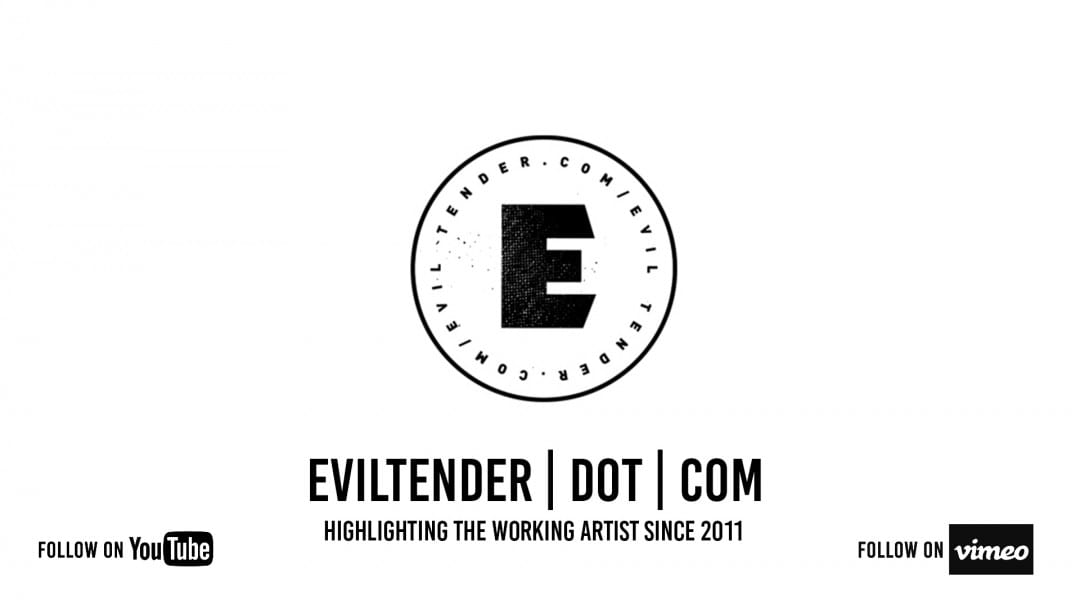
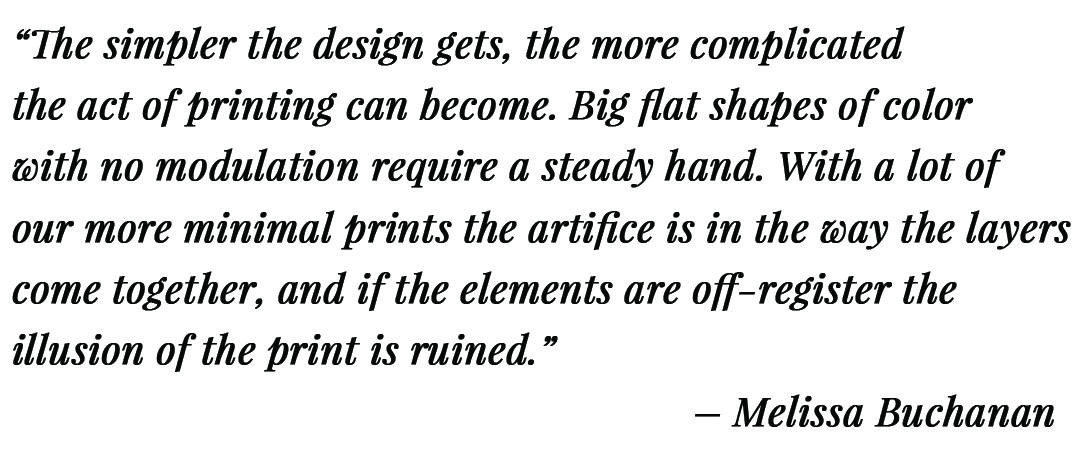
These 2 amazing folks are my great niece and her husband and I am one proud Auntie!
I love the print on a brown background with black animals and people killing each other with pink blood. I saw it in the craft church book sold at Dollar Tree. SUGGESTION: Make a t-shirt with text saying, OMG, would u believe people n USA live n communities such as this? Sell at Amazon. Send me a commission because I am sure you will print faster mother fucker